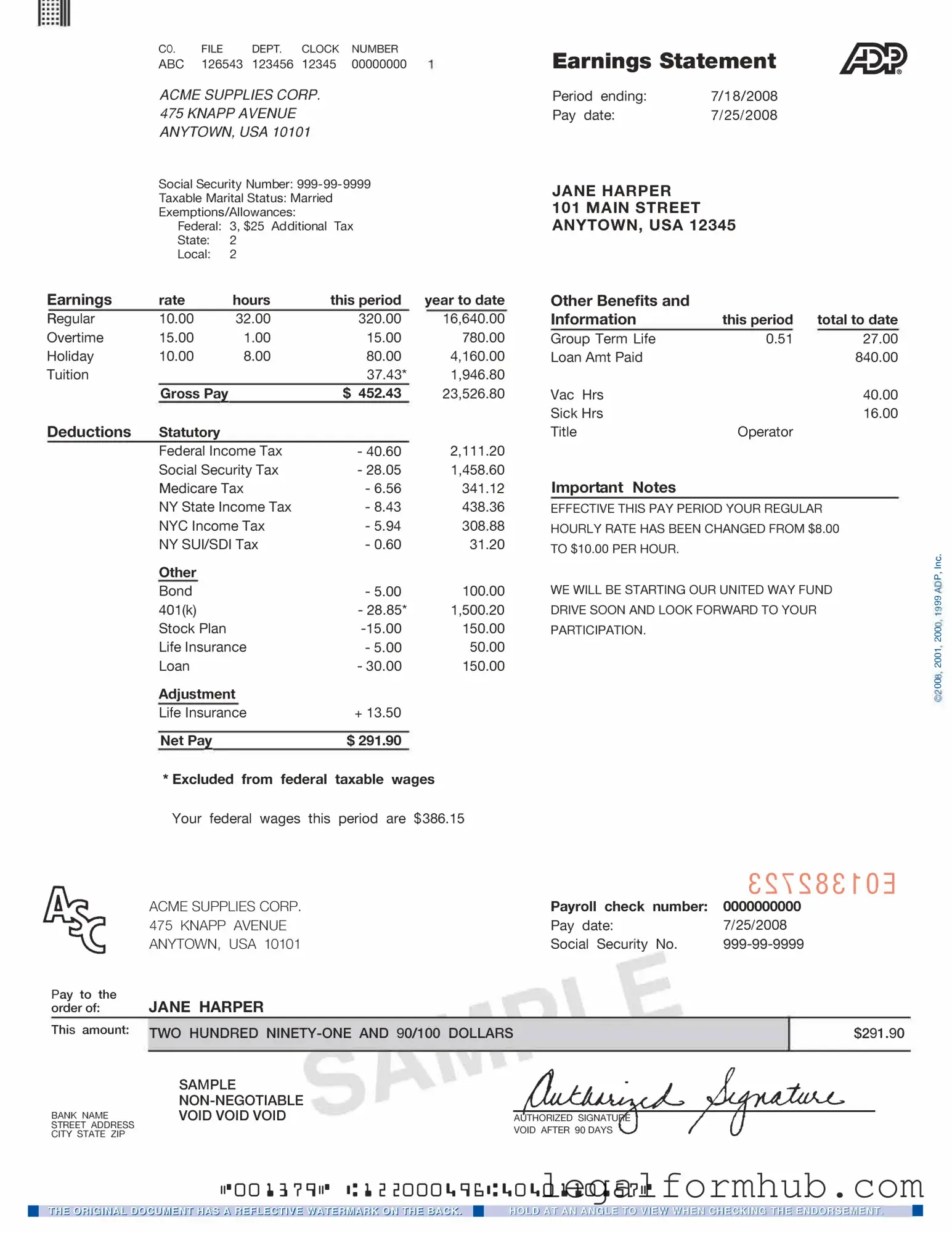Fill Your Adp Pay Stub Form
The ADP Pay Stub form is a document that provides employees with a detailed breakdown of their earnings and deductions for a specific pay period. This form plays a crucial role in helping individuals understand their compensation, including gross pay, taxes withheld, and any other deductions. By reviewing the pay stub, employees can ensure accuracy in their pay and stay informed about their financial situation.
Open Adp Pay Stub Editor Here
